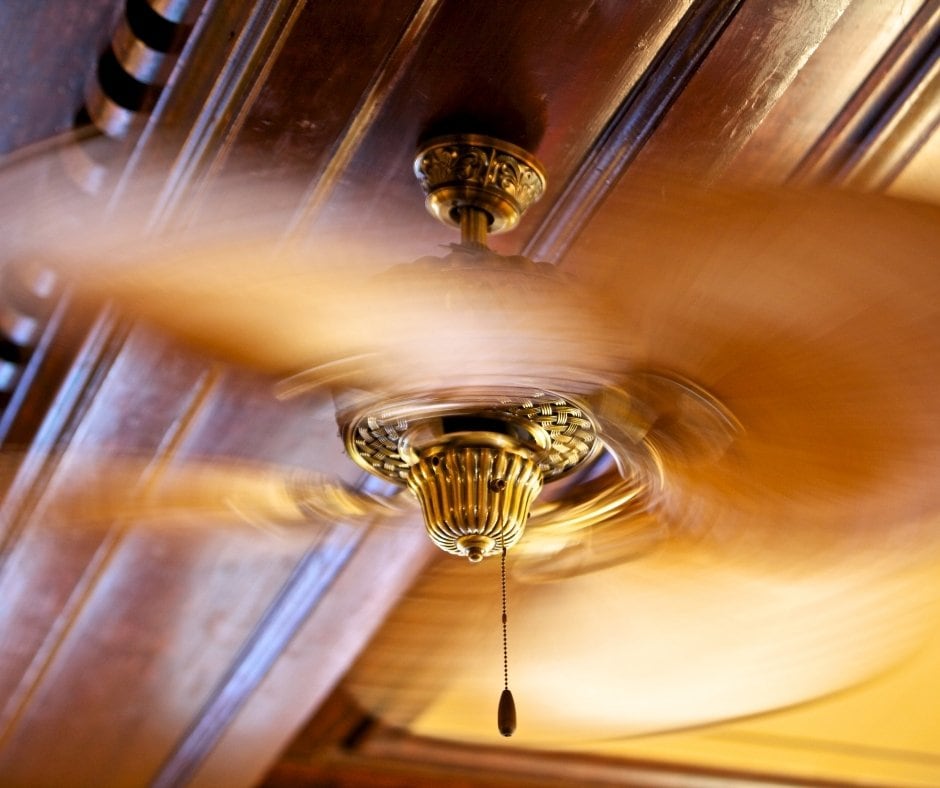Most people associate fans with hot, muggy summer nights. They use them to keep a breeze blowing through their homes to make things feel a bit cooler.
But, it’s important to note that fans don’t actually cool rooms. Instead, they help you manage your home’s climate. So, a natural question is whether they help in winter.
In This Article We'll Discuss
Do Ceiling Fans Really Help in the Winter?

We all know that heat rises. The hottest part of a campfire is actually the few inches above the flames. The same principle is at work when it comes to heating your home in the winter.
The warm air that blows from your heating vents will rise to the highest point in the room. Unfortunately, that isn’t where people tend to congregate.
That’s where a ceiling fan comes in. A ceiling fan can take the cooler air up from below and push it towards the room’s highest parts. That will force the warm air that has collected there to run down the walls and fill the space in the floor where the cool air had been.
To do this, you’ll need to reverse your ceiling fan and spin it at its lowest setting. Normally, ceiling fans spin counterclockwise because the blades are designed to push air down when spun in that direction.
When you reverse the direction of the blades, the action changes from forcing air down to bringing it up. If you reverse the blades, make sure you run it at its lowest speed.
If you run your fan too quickly, warm air will move from the top of your room to the floor, but you also might accidentally make the room cooler.
Will Running a Ceiling Fan in the Winter Help Save Money?

Using a ceiling fan in the winter can cut your heating costs by as much as 15 percent. Ceiling fans — especially modern, highly efficient fans — use very little electricity, whereas a space heater can use quite a bit.
So, you could save a noticeable amount of money. However, you could also save an insignificant amount of money. Let’s look at some reasons for the difference.
Rooms with very high ceilings, especially sloped ceilings, will have a lot more heat collected at the top than rooms with low ceilings. A fan will help redistribute that air effectively and efficiently.
For the most part, heating with natural gas is much cheaper than heating with electricity. So, even though your fan might use a lot less energy than an electric space heater, it may still cost you a little more than turning your gas furnace thermostat up a degree or two.
If you live someplace warm, you might use very little heat in winter. So, you may not see any difference in your utility bills. The more heat you use, the greater the chance that you can reduce your costs by using ceiling fans.
Can Ceiling Fans Heat a Room in Winter?
Ceiling fans don’t heat rooms in the same way space heaters do. They don’t create their own heat. Instead, they help distribute the heat that your furnace or space heater generate that has collected at the room’s highest point.
You’ll need a fan that is capable of operating in reverse or spinning clockwise. The blades need to be at an angle so that, when spun counterclockwise, they push air from the highest point to the lowest. The breeze is enough to help you feel a bit warmer.
When spun clockwise, the blades will carry cooler air from below them up and into the room’s highest areas. This will displace warm air, which naturally collects in a room’s highest point. Then, the warm air is pushed down along the walls and into the middle of the room where people are.
Conclusion

Ceiling fans are used to move air. They can make your home feel a little cooler on a hot summer night, and you can also use them to get the warm air from the top of your ceiling to the floor where people are.
We hope you found this article helpful. If you did, or you have something to contribute to the conversation, we’d love to hear about it in a comment. You can also share this article on your social media networks.

